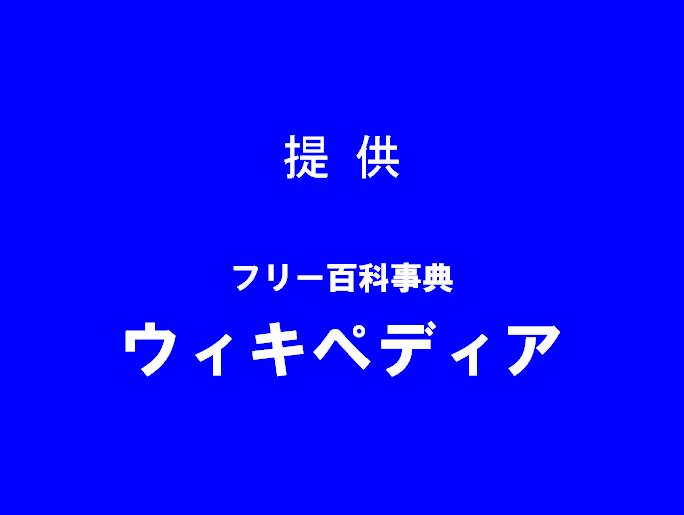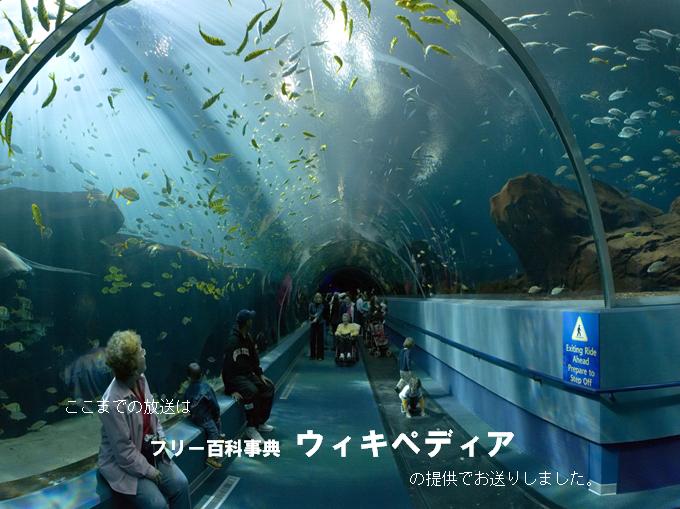Underwriting spot on:
[Wikipedia]
[Google]
[Amazon]



 An underwriting spot, known as sponsor credit ( ja, 提供クレジット, Teikyō kurejitto) in
An underwriting spot, known as sponsor credit ( ja, 提供クレジット, Teikyō kurejitto) in
Program Underwriting Policy
from the PBS website *
Japan
Japan ( ja, 日本, or , and formally , ''Nihonkoku'') is an island country in East Asia. It is situated in the northwest Pacific Ocean, and is bordered on the west by the Sea of Japan, while extending from the Sea of Okhotsk in the n ...
, is an announcement made on public broadcasting
Public broadcasting involves radio, television and other electronic media outlets whose primary mission is public service. Public broadcasters receive funding from diverse sources including license fees, individual contributions, public financing ...
outlets, especially in the United States
The United States of America (U.S.A. or USA), commonly known as the United States (U.S. or US) or America, is a country Continental United States, primarily located in North America. It consists of 50 U.S. state, states, a Washington, D.C., ...
, in exchange for funding. These spots usually mention the name of the sponsor, and can resemble traditional television advertisement
A television advertisement (also called a television commercial, TV commercial, commercial, spot, television spot, TV spot, advert, television advert, TV advert, television ad, TV ad or simply an ad) is a span of television programming produce ...
s in commercial broadcasting
Commercial broadcasting (also called private broadcasting) is the broadcasting of television programs and radio programming by privately owned corporate media, as opposed to state sponsorship. It was the United States′ first model of radio (a ...
to a limited extent; however, under the terms of a public broadcaster's license from the Federal Communications Commission
The Federal Communications Commission (FCC) is an independent agency of the United States federal government that regulates communications by radio, television, wire, satellite, and cable across the United States. The FCC maintains jurisdicti ...
, such spots are prohibited from being promotional (such as making product claims, using superlatives, or being more than 30 seconds long) or making any sort of " call to action" (a phrase that refers to "any device designed to prompt an immediate response or encourage an immediate sale" such as announcing prices or providing an incentive to buy). In the U.S., these restrictions apply to any television or radio station licensed as a non-commercial educational
A non-commercial educational station (NCE station) is a radio station or television station that does not accept on-air advertisements ( TV ads or radio ads), as defined in the United States by the Federal Communications Commission (FCC) and was o ...
(NCE) stations, and even for non-sponsoring companies and products. However, this is not the case in Japan, as these spots can be played on both public and private broadcasters and are typically played alongside traditional commercials and appear after a show's opening theme or after a preview of a next episode or appear during a scene of a show.
Donors who contribute funding can include corporation
A corporation is an organization—usually a group of people or a company—authorized by the state to act as a single entity (a legal entity recognized by private and public law "born out of statute"; a legal person in legal context) and ...
s, small business
Small businesses are types of corporations, partnerships, or sole proprietorships which have fewer employees and/or less annual revenue than a regular-sized business or corporation. Businesses are defined as "small" in terms of being able to ...
es, philanthropic organizations
Philanthropy is a form of altruism that consists of "private initiatives, for the public good, focusing on quality of life". Philanthropy contrasts with business initiatives, which are private initiatives for private good, focusing on material ...
, charitable trusts, and individuals. An underwriting spot can typically include the name (and, in local underwriting spots, address) of the underwriter, possibly including a company slogan (provided the slogan does not contain a call to action) and a message of appreciation, either from the sponsor indicating its pride in the program or from the station indicating its thanks for the underwriter's sponsorship. Individual spots, more apparent on public radio
Public broadcasting involves radio, television and other electronic media outlets whose primary mission is public service. Public broadcasters receive funding from diverse sources including license fees, individual contributions, public financing ...
, often are used to express personal appreciation for the station's programming, and often also offer family members or friend best wishes on a major life event such as a wedding, anniversary or birthday.
Criticisms include inhibiting influences on public affairs programs (even self-censorship) where investigative journalism
Investigative journalism is a form of journalism in which reporters deeply investigate a single topic of interest, such as serious crimes, political corruption, or corporate wrongdoing. An investigative journalist may spend months or years res ...
is featured and tendencies toward the use of non-artistic criteria in determining the selection of programs, such as symphony
A symphony is an extended musical composition in Western classical music, most often for orchestra. Although the term has had many meanings from its origins in the ancient Greek era, by the late 18th century the word had taken on the meaning c ...
broadcasts on radio and theatrical productions on television.
PBS policy
ThePublic Broadcasting Service
The Public Broadcasting Service (PBS) is an American public broadcaster and non-commercial, free-to-air television network based in Arlington, Virginia. PBS is a publicly funded nonprofit organization and the most prominent provider of educa ...
( PBS) defines its "Program Underwriting Policy" in its PBS Redbook. {{As of, 2022 its provisions include the following:from the PBS website *
Underwriters
Underwriting (UW) services are provided by some large financial institutions, such as banks, insurance companies and investment houses, whereby they guarantee payment in case of damage or financial loss and accept the financial risk for liabilit ...
are defined as third parties that voluntarily contribute cash to partially or fully finance the production or acquisition of a program by a PBS station. Underwriters do not include investment or licensing partners or distribution entities providing cash for other purposes.
* The block of time containing underwriter credits is called the "underwriting credit pod"; it can be no longer than 60 seconds, with no more than 15 seconds allocated per underwriter. If any underwriter is mentioned, then all must be acknowledged.
* Underwriting credit pods must "mirror the production values of the program and flow smoothly with program content and other packaging elements."
* Underwriting credit pods must appear at the end of the program and may appear at the beginning. In news and public affairs programs, and in all programs on PBS since 2009, underwriting credits must be included in both places. The end underwriting pod can be either before or after the program's production credits; if an underwriting pod is including in the beginning, it must start within the program's first three minutes and should be placed after the program's opening or tease (in order to separate national underwriting from local underwriting).
* When PBS partially funds the production, the underwriting credit pod must end with "...from Viewers Like You. Thank you"; when funding is received from the Corporation for Public Broadcasting
The Corporation for Public Broadcasting (CPB) is an American publicly funded non-profit corporation, created in 1967 to promote and help support public broadcasting. The corporation's mission is to ensure universal access to non-commercial, ...
(CPB), they are credited with a voiceover
Voice-over (also known as off-camera or off-stage commentary) is a production technique where a voice—that is not part of the narrative (non- diegetic)—is used in a radio, television production, filmmaking, theatre, or other presentations. ...
("This program was made possible by the Corporation for Public Broadcasting") and a "visual treatment" consisting of the CPB logo, the tag line "a private corporation funded by the American people" and the CPB's website ("cpb.org"); likewise when "Viewers Like You" funding is received, they are credited with a voiceover ("This program was made possible by (the Corporation for Public Broadcasting, and by) contributions to your PBS station from Viewers Like You. Thank you."). Originally, “Viewers Like You” was referred as “Public Television Stations” (often credited as “''this station and other public television stations''”) from PBS’s beginnings until 1989. From then to November 1, 1999, it was credited as “''the annual financial support from PBS Viewers Like You''”, with “annual” added in 1993 and “PBS” added in 1997.
Sponsorship
Sponsoring something (or someone) is the act of supporting an event, activity, person, or organization financially or through the provision of products or services. The individual or group that provides the support, similar to a benefactor, is k ...
underwriting and advertising are essentially the same thing when linked by the exchange of something of value such as cash, goods or services. The underwriter receives a number of informational messages about their business which are broadcast in exchange for a dollar amount. Individuals, foundations, and non-profit
A nonprofit organization (NPO) or non-profit organisation, also known as a non-business entity, not-for-profit organization, or nonprofit institution, is a legal entity organized and operated for a collective, public or social benefit, in co ...
donors may underwrite programming without the need for an underwriting informational advertising contract. PBS and CPB rules permit underwriting commercial use for broadcast stations with certain speech limits that are only required of broadcast stations because of the nature of the non-profit license.
Channels that run non-commercial formats on cable television
Cable television is a system of delivering television programming to consumers via radio frequency (RF) signals transmitted through coaxial cables, or in more recent systems, light pulses through fibre-optic cables. This contrasts with bro ...
or direct broadcast satellite
Satellite television is a service that delivers television programming to viewers by relaying it from a communications satellite orbiting the Earth directly to the viewer's location. The signals are received via an outdoor parabolic antenna comm ...
television tend not to use underwriting spots, as they can use subscriber fees to fund operations (such as C-SPAN
Cable-Satellite Public Affairs Network (C-SPAN ) is an American cable and satellite television network that was created in 1979 by the cable television industry as a nonprofit public service. It televises many proceedings of the United States ...
). Classic Arts Showcase
Classic Arts Showcase (CAS) is a television channel in the United States promoting the fine arts. The television program content includes prepared media and recorded live performances. It is a 24-hour non-commercial satellite channel broadcastin ...
is an exception, as the service is funded through a foundation established by its founder, Lloyd Rigler
Lloyd Eugene Rigler (May 3, 1915December 7, 2003) was an American businessman and philanthropist. As a businessman, he and a partner, Lawrence E. Deutsch, made Adolph's Meat Tenderizer a national brand. One of his notable philanthropic efforts wa ...
, and thus credits that foundation for its funding on-air. As these channels are not broadcast over the air, they are exempt from the wording restrictions on underwriting spots on cable stations, should they choose to use them.
References